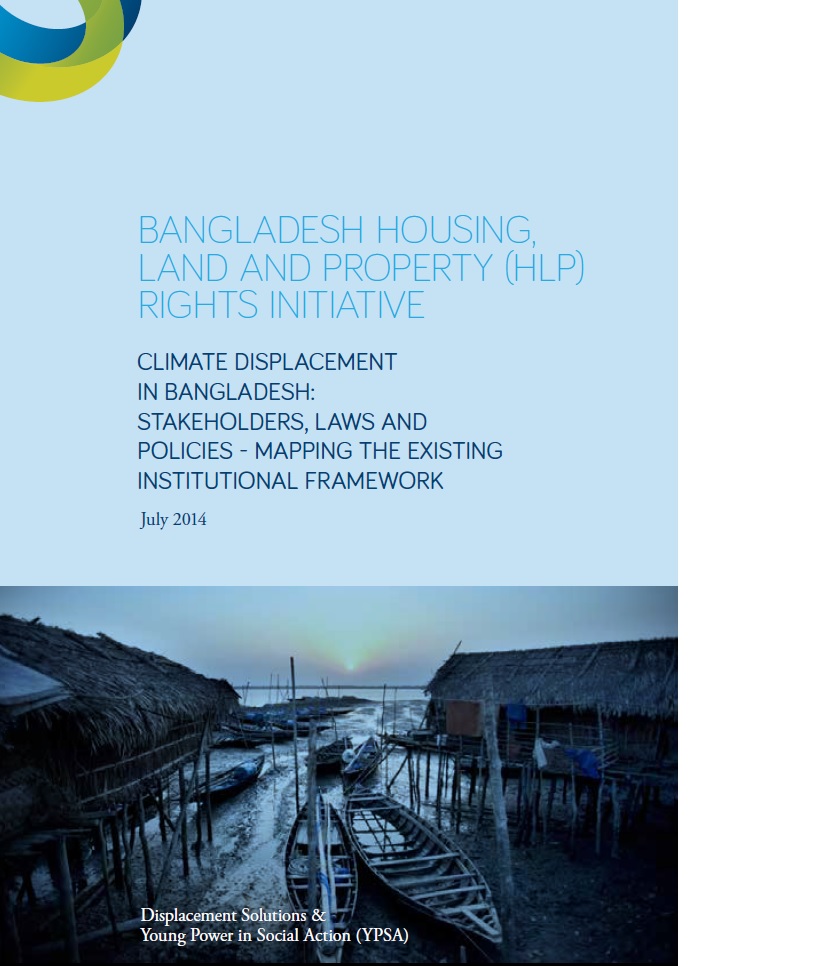Location
Displacement Solutions (DS) works with climate displaced persons, communities, governments and the UN to find rights-based land solutions to climate displacement. DS also works to empower displaced people and refugees to exercise their right to return and have restored to them their original homes, lands and properties through reliance on the right to restitution. DS works together with and on behalf of people who have been displaced not only by conflict, forced eviction or other human rights abuses, but also natural disaster, climate change or other circumstances beyond their control. DS assists in finding alternative solutions such as compensation or relocation if this is their wish.
DS does not believe in simply blaming governments responsible for human rights abuses. We take human rights work one-step further to solve situations where forcibly displaced people have lost their homes. DS offers practical guidance on how to reduce, eliminate or redress such abuses. This is done through development of institutional and policy frameworks, legal advocacy, training, research and media.
Displacement Solutions is dedicated to ensuring that all displaced persons can be provided with the most viable options to returning home within the shortest possible time. These objectives are pursued through two parallel tracks: building and maintaining the world’s only Housing Land and Property Rights (HLP) Expert Registry and Proactive Catalytic HLP Projects.
Members:
Resources
Displaying 6 - 10 of 13CLIMATE DISPLACEMENT IN BANGLADESH: STAKEHOLDERS, LAWS AND POLICIES - MAPPING THE EXISTING INSTITUTIONAL FRAMEWORK
Climate change is one of the greatest challenges facing the world today and the individuals and communities who face being displaced from their homes and lands as a result of climate change are the human faces of this tragedy. Bangladesh is one of the countries most vulnerable to the impacts of climate change. The IPCC and other expert bodies have repeatedly identified Bangladesh as one of the countries most threatened by climate change.
Bridging the HLP Gap: The Need to Effectively Address Housing, Land and Property Rights During Peace Negotiations and in the Context of Refugee/IDP Return - Preliminary Recommendations to the Government of Myanmar, Ethnic Actors and the International Comm
ABSTRACTED FROM THE EXECUTIVE SUMMARY: Of the many challenging issues that will require resolution within the peace processes currently underway between the government of Myanmar and various ethnic groups in the country, few will be as complex, sensitive and yet vital than the issues comprising housing, land and property (HLP) rights.
Bridging the HLP Gap - The Need to Effectively Address Housing, Land and Property Rights During Peace Negotiations and in the Context of Refugee/IDP Return
Bridging the HLP Gap -
The Need to Effectively Address Housing, Land and Property Rights
During Peace Negotiations and in the Context of Refugee/IDP Return:
Preliminary Recommendations to the Government of Myanmar,
Ethnic Actors and the International Community.....Executive Summary:
"Of the many challenging issues that will require resolution within the peace processes currently underway
between the government of Myanmar and various ethnic groups in the country, few will be as complex, sensitive
Myanmar at the HLP Crossroads: Proposals for Building an Improved Housing, Land and Property Rights Framework that Protects the People and Supports Sustainable Economic Development
ABSTRACTED FROM THE EXECUTIVE SUMMARY: Myanmar faces an unprecedented scale of structural landlessness in rural areas, increasing displacement threats to farmers as a result of growing investment interest by both national and international firms, expanding speculation in land and real estate, and grossly inadequate housing conditions facing significant sections of both the urban and rural population. Legal and other protections afforded by the current legal framework, the new Farmland Law and other newly enacted legislation are wholly inadequate.
Myanmar at the HLP Crossroads (final version)
Executive Summary:




